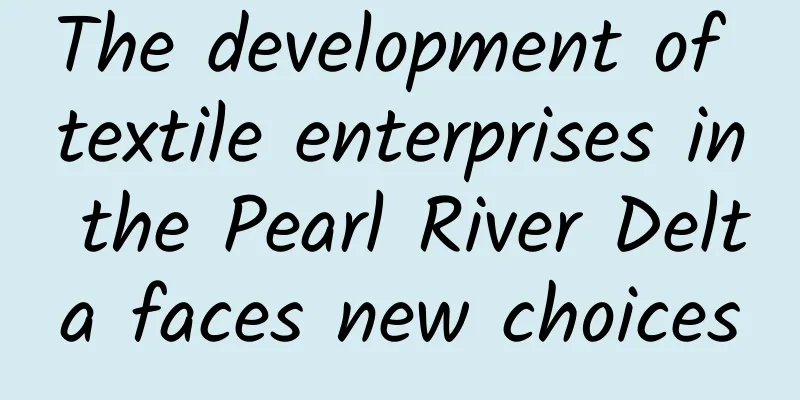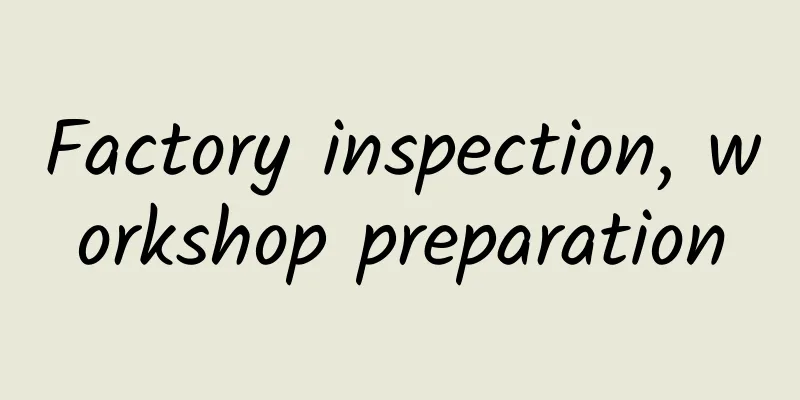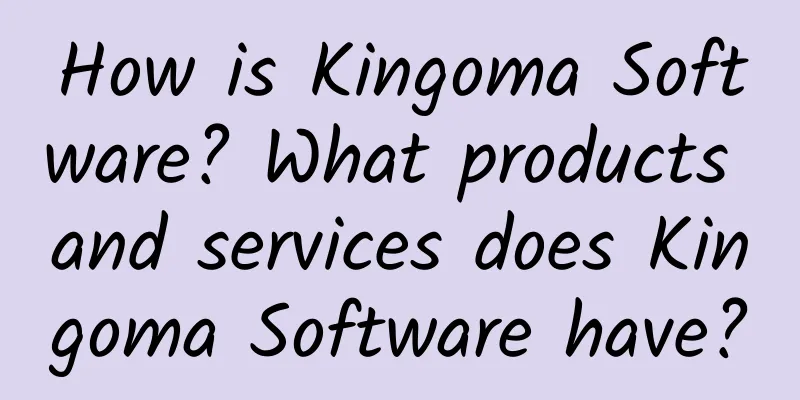The development of textile enterprises in the Pearl River Delta faces new choices

|
With the rapid economic development, the Pearl River Delta region, as the leading economic development region in southern China, has begun to accelerate the pace of industrial upgrading. Decision-makers have promoted the rapid upgrading of industrial structure through the market and the government. Guangdong textile enterprises are facing new choices: either to switch from OEM to ODM, create brands, and obtain high-end profits in the industry; or to switch to lower-cost regions, continue to maintain the original industrial links, and expand to a larger scale. The first question is how to do it, and the second question is where to move to? This is a question that a large number of textile and printing and dyeing entrepreneurs are very concerned about. For this reason, the reporter visited Dr. Wu Yi, a famous project site selection expert and professor at Guangdong University of Business Studies. Consider transfer Reporter: Professor Wu, what do you think about the current industrial upgrading and transfer of the garment printing and dyeing industry in the Pearl River Delta region? Wu Yi: It can be said with certainty that, based on the objective law of industrial upgrading, the rising production costs in the Pearl River Delta region are an inevitable trend. Traditional textile, printing and dyeing and washing enterprises, especially those without their own brands, cannot afford the rising production costs, and relocation is a wise choice. If the location is properly selected, the enterprise can not only obtain the benefits of reduced direct production costs, but also obtain greater scale benefits through simple scale expansion, and generally obtain excess profits far higher than those in the Pearl River Delta region. In fact, the textile and printing and dyeing enterprises in the Pearl River Delta region were also forced to move in after industrial upgrading in developed regions. The newly moved enterprises achieved unprecedented development with the low production costs in the mainland. Although the Dongguan Fu'an Textile Printing and Dyeing Co., Ltd., which was investigated not long ago, was "famous", it is an indisputable fact that the company's scale expanded rapidly after moving to Dongguan. It is much better to move than not to move! This is especially true when the company has no obvious advantages in technology, equipment, and management! To put it more clearly, if your company produces low-end or medium-end products, or is currently only small or medium-sized in the industry, it is much easier to make money in other places than to stay. Maybe in a few years, the low cost in other places will make you a leader in the industry. Cost is the core competitiveness Reporter: Professor Wu, where will the textile and printing and dyeing companies in the Pearl River Delta region move to? Wu Yi: This needs to start with the analysis of several major factors that affect the cost of the textile and printing and dyeing industries. First, this type of industry is labor-intensive, and the level of wages has a significant impact on the cost of enterprises. For an enterprise with 100 employees, if the monthly wage expenditure is saved by 100 yuan per person, the enterprise will save 120,000 yuan in one year. In the medium-sized textile, printing and dyeing and washing enterprises in the Pearl River Delta, the number of employees is generally more than 500, and the monthly wages of non-local employees are usually more than 300 yuan lower than those of local employees. According to this preliminary calculation, the annual savings of enterprises in this item alone will be as high as 1.8 million yuan. Secondly, a large amount of water with good quality has become a key factor restricting such enterprises. From geographical common sense, we know that South China is the region with the most abundant rainfall in my country; physical and chemical analysis of water quality and decades of practice have shown that the Pearl River Basin is an ideal place for the development of such industries. Obviously, it is best for such industries to move to underdeveloped upstream areas. In fact, many textile, printing and dyeing and washing enterprises that act quickly have moved to Boluo and other places. However, it is obvious that it is inappropriate for downstream sewage-discharging enterprises to move upstream, because downstream pollution remains. In order to correct this phenomenon in a timely manner, Guangdong Province quickly issued relevant policies, explicitly prohibiting the establishment of sewage-discharging enterprises in the upper reaches of the Pearl River, such as the Dongjiang River and the Beijiang River. Although the policy has yet to be improved, its orientation is clear: it is prohibited to set up sewage-discharging enterprises in the upstream. Third, land prices and civil engineering costs. Land prices outside the Pearl River Delta are relatively low, and civil engineering costs will be much lower as long as they are not on the impact fan. The former can be only 1/10; the latter can save about 1/2 of the cost in areas with good geological conditions because no or less pile driving is required. Adding the two together, the total cost savings is very considerable. Some companies complete the entire fixed asset investment with the money saved from this. That is, with the money that is only enough to buy land in the Pearl River Delta, the overall construction of the company, such as buying land, building factories, and purchasing equipment, can be completed in other places. Fourth, other production factors such as electricity. The domestic west-to-east power transmission has long been known to everyone. The industrial electricity cost outside the province is 0.2 yuan per kilowatt-hour lower than that in the Pearl River Delta, and there is no talk of power outages. This not only directly reduces the cost of electricity, but also allows enterprises to work at full capacity without worrying about capacity loss, further reducing enterprise costs. Through the above simple analysis, we can see that the transfer has led to a substantial reduction in corporate investment and production costs, greatly enhancing their core competitiveness. A new round of reshuffle in the industry is inevitable. As the saying goes, who will be next year? There is no accident, only the inevitability of the perfect combination of wisdom and courage! Where to transfer? In fact, there are many places around the "Pan-Pearl River Delta", especially Guangxi, which meets the above conditions. Looking at the whole territory of Guangxi, there are very few cities that have airports, railways, ports, and highways that are fully connected to Guangdong. Beihai City should be paid special attention to here. If its policy environment permits, its pollution control measures are advanced and effective, and there is a stable environment for the long-term development of textile, printing and dyeing and washing enterprises for more than 10 years, it should be a very good choice. However, how to go still requires enterprises to conduct a comprehensive and comprehensive comparison of various candidate places based on on-site inspections, and finally take quick action. How to view environmental protection Reporter: You have pointed out the advantages that Guangxi's coastal areas have in taking over the transfer of traditional industries from the Pearl River Delta. Do you have any specific operational suggestions for companies that are considering relocation? Wu Yi: You asked a good question. The key to the transfer lies in whether the local government has enough foresight to protect the environment even if it would rather lose some of the current investment projects. In the long run, this is more of a protection for investors. If the local government does not consider environmental protection, or only considers it symbolically, investors should be cautious! From direct discharge to physical and chemical treatment, to biochemical treatment, and then to suspension of production or moving to industrial parks, how can enterprises withstand these repeated changes? Even if they survive by chance, it is difficult to achieve anything. Therefore, carefully looking for a city that can operate stably for more than 10 years is the key to the success of the transfer. Whether the city adopts the most advanced environmental protection industrial park management model, whether it has sufficient long-term environmental protection approval, and whether the pollution control technology reaches the domestic first-class level are all important details that we cannot ignore. Developing the West must not become a disaster for the West! This is not only a question of social responsibility, but also a matter of life and death for whether the company can operate in the long term. Advance alone or in groups? Reporter: So, when an enterprise relocates, is it better to do it individually or in a group? Wu Yi: This is a question of operational details. But it is also crucial for enterprises. Generally speaking, there are pros and cons. For small and medium-sized enterprises, group transfer is more advantageous than individual transfer. This can quickly generate greater demand, and industrial supporting facilities can be solved more easily and quickly. In this way, the relevance of upstream and downstream industries can be retained to the maximum extent, the negotiation power with the government of the investment location can be enhanced, investment risks can be avoided, and the sense of security of normal operation after completion and production can be enhanced, thereby minimizing potential uncertainties. If it is a large enterprise, especially a textile, printing and dyeing and washing enterprise with a relatively complete market network, it can completely adopt a single-soldier approach to get the first taste of the soup early. Get the benefits brought by low costs as early as possible, leave current or potential competitors behind in time, and form a first-mover advantage. |
<<: Hangzhou's footwear exports increased significantly in the first quarter
>>: BSCI certification: a passport to open up international markets
Recommend
The difference between OCS certification and GOTS certification!
First of all, the objects of certification are def...
What is Meidaole? What services does Meidaole provide?
Founded in 2014, Meidaole is a foreign trade trai...
What are the methods and techniques for attracting traffic to Facebook?
Facebook is the platform with the most social tra...
Common fire safety issues and solutions during BSCI factory audits (II) Illusion of fire equipment indications
Problem phenomenon: Fire equipment indication is ...
Home Depot Code of Conduct
Home Depot Code of Conduct <BR>Ethical Stand...
Tchibo factory audit information
1. Tchibo factory inspection company certificatio...
Importance of HACCP Certification
In the food production process, the early detect...
What is Webpower? What are the platform advantages of Webpower?
What is Webpower? Webpower was founded in 1999 an...
What is UrbanClap? UrbanClap's service model
UrbanClap is India's largest O2O service plat...
What is Frontier? What services does Frontier offer?
What is Frontier? Frontier Car Group (FCG) is a B...
Carter's Human Rights Factory Inspection Checklist - Carter's Factory Inspection Special
Carter's Human Rights Factory Inspection Check...
Factory guard system in BSCI
I. General Provisions (1) Security guard manageme...
How was the establishment of Yiwu Cross-border E-commerce Association? The process of the establishment of Yiwu Cross-border E-commerce Association
On September 25, 2013, the approval for the prepa...
GRS factory audit checklist company documents
The contents of the relevant company documents in...
BestBuy China online store opens on Tmall
Recently, BestBuy announced that it will lay off ...
![[eBay Newbies] What are eBay’s free relisting rules?](/upload/images/67c9a7a8a3dd0.webp)








